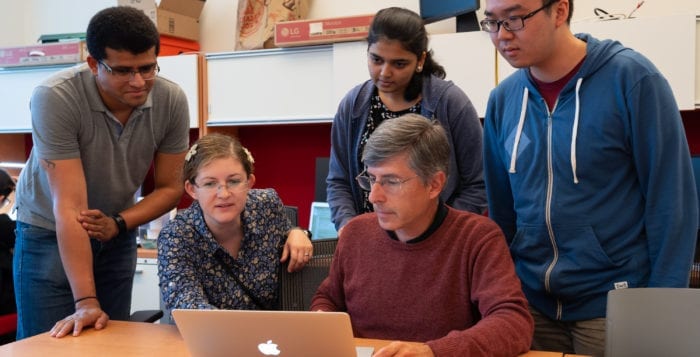By Daniel Dunaief

We have abbreviations for laughter, LOL; for humble opinions, IMHO; and for love, ILU. We need shorthand for something that’s “not about you” (NAY).
We live complicated lives and can often travel along a superhighway of speeding emotions. When someone we know sees us, we may be reacting to something we are feeling that has nothing to do with them. We may have received an email that we got the job, that we won a contest or that our bid for a house was accepted. At the same time, we may not want to share whatever someone else sees in us. It’s why the following conversation is repeated throughout the world:
“What’s up?”
“Nothing. I’m good.”
“Are you sure?”
“Yup, thanks.”
So, maybe the conversation doesn’t track with exactly those mundane words, but the idea is the same: it’s NAY. Whatever someone is feeling in the moment, someone else appears who may have nothing to do with the arriving person. The facial expression, body language or vibe someone may have been transmitting has nothing to do with the other person.
The NAY phenomenon is a concept middle schools should teach their students. After all, most adults recognize the middle school years as among the toughest and least enjoyable periods in life, as each day is a battle to overcome fatigue, acne, self-conscious moments, and that impossible transition from adorable youth to uncomfortable adolescence. Middle school teachers work in a building that is a simmering cauldron of strongly held emotions that can and do change as rapidly as shifting winds during a storm.
After reminding students not to bully each other, to treat others the way they would like to be treated, to take responsibility for their actions and to stay ahead in their classes, schools should also encourage students to understand that snickering, laughing, eye rolling and head shaking are often NAY. If someone disapproves of something or someone, it’s quite likely that something in that person’s life is bothering him or her and that it has nothing to do with you.
When we become parents, we relive so many of the stages of our own lives vicariously, watching our children as they search for new friends, speak to their teachers, pick up a bat to hit a ball or put together the pieces of an instrument. Each step they take is their step, not ours. We can and do help and encourage them, transporting them to rehearsals, suggesting they practice singing arpeggios and providing structure for their lives. Ultimately, however, they reach their goals because of their efforts, their talents and their commitment. Our lives have become so linked to those of our children that we can feel the gut-dropping moment when the ball skids behind them into the goal, when they learn their test scores, or when their boyfriend or girlfriend ends a long-term relationship with them.
Our role, however, is not to pile our emotions on top of the teetering pile or to insert ourselves into our children’s lives. We have to step back, realize that their incredible successes or momentary setbacks are not about us, and try to figure out what they might need.
Children offer us an incredible opportunity for connection, commitment and love. They are not, however, a way to correct the slights we felt when we were young or a chance to become the winners instead of the losers. When anything or everything our children do becomes about us and not about them, then what they do is no longer for themselves, which deprives them of owning their mistakes and accomplishments. So, next time you’re drawn into their lives, make sure you remember it’s NAY.




 Now the shoe is on the other foot.
Now the shoe is on the other foot.

























